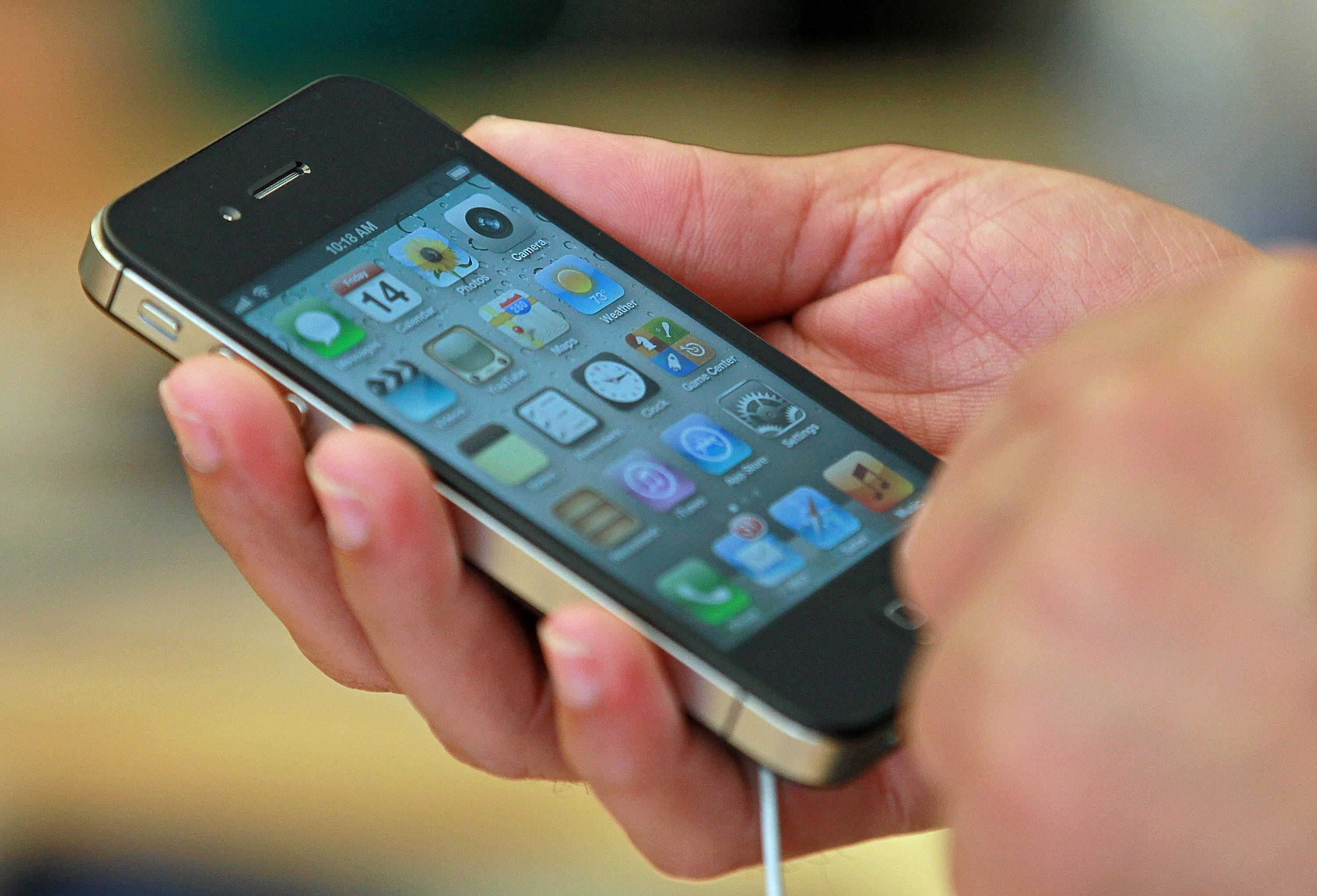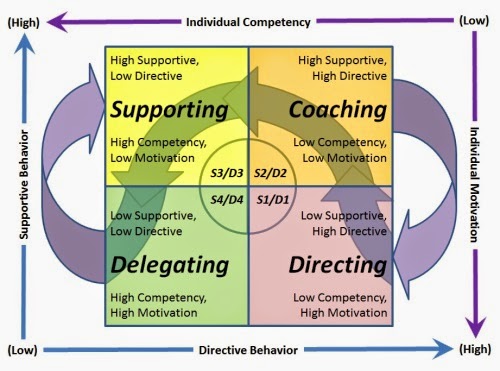Introduction
By practicing different team settings in discussion process of developing kitchenware, we aimed at exploring the relationship between creativity and team trust in different kinds of organization.Our discussion process features two different settings: The first one (exercise A1) features the team setting in a traditional organization, which a supervisor has the authority controlling the discussion. The second one (exercise A2) features the team setting in an innovative organization, like Pixar.
Team Discussion Process in a long legacy company
Movie Script for Exercise A1 – Kitchenware presentation in a long legacy company
Good afternoon, CEO, Chief Operating Officer, Marketing Director, I’m Terry, the product development manager. Today I am going to present you the newly designed microwave oven. The microwave oven is designed with simple button for control, furthermore, it is designed to operate with both solar energy and electricity. Sustainable energy is a very hot topic in modern society, this microwave oven is installed with a chargeable battery and solar energy panel. During the daytime, energy is stored into the battery and the energy will be released when the oven operates.
We target to sell this microwave often in some rural areas in China, where sunshine is more readily available than in the cities. The design of simple button is for convenient control for elderly people.
We believe this simple and solar energy-operating microwave oven is very suitable to use in rural areas in China.
Team Discussion Process in an innovative company
We further our discussion by brainstorming the pros and cons of each idea. After elaboration of each idea, and we finally compromise that the microwave oven with control over mobile phone application is the best idea.
Damon: Mary, you look so tired today.
Mary: Damon, yes, I am very tired after today's hard work in office.
Damon: Then you should go home to enjoy your dinner !
Mary: What? Enjoy my dinner? I have to rush to my house and cook for it. It is definitely not enjoyable.
Damon: Oh, sorry about that.
(Damon took his mobile phone out and press some keys)
Mary: Damon, what are you doing?
Damon: I am sending signal to my microwave oven for it to prepare my dinner.
Mary: How can you do that?
Damon: This newly designed microwave often is connected to the Internet by wifi.
Mary: That's interesting, tell me more about that.
Damon: Before going to work in the morning, just put the food package inside the oven. It will work like a refrigerator until the right time. When I’m about to leave office, simply give a signal to the oven by using the MyOven application on my mobile phone. The application will then detect my location, and the food will be cooked at the right time before I arrived.
Mary: This is design is very useful for busy person like me. I don’t need to worry about my dinner anymore.
Damon: This microwave often is very suitable for people who are too busy to cook. We believe this will be popular in Hong Kong.
For exercise A1, this is a traditional centralized power company. As team members, when we get an idea, we have to double think before speaking to supervisor. Even our idea is good, he's always able to find out at least two negativeness of suggestions. It's a little disappointed us, there is no encouragement at all.
The atmosphere is too strict, no laughing allowed, no freedom. And we're afraid to communicate with each other. Each time, we have any suggestion, we need to hand up like pupils. Only getting permission from supervisor, then we have possibility to speak.
For exercise A2, all team members are equal. Everyone has the chance to raise or to voice out for our idea. At the beginning, there is no supervisor/leader in our team that nobody directs our discussion. So, it is not enough trust among us. Each of us often argues for our own opinion. Final decision cannot be easily made.
Movie Script for Exercise A2 – Kitchenware presentation in an innovative company
Damon: Mary, you look so tired today.
Mary: Damon, yes, I am very tired after today's hard work in office.
Damon: Then you should go home to enjoy your dinner !
Mary: What? Enjoy my dinner? I have to rush to my house and cook for it. It is definitely not enjoyable.
Damon: Oh, sorry about that.
(Damon took his mobile phone out and press some keys)
Mary: Damon, what are you doing?
Damon: I am sending signal to my microwave oven for it to prepare my dinner.
Mary: How can you do that?
Damon: This newly designed microwave often is connected to the Internet by wifi.
Mary: That's interesting, tell me more about that.
Damon: Before going to work in the morning, just put the food package inside the oven. It will work like a refrigerator until the right time. When I’m about to leave office, simply give a signal to the oven by using the MyOven application on my mobile phone. The application will then detect my location, and the food will be cooked at the right time before I arrived.
Mary: This is design is very useful for busy person like me. I don’t need to worry about my dinner anymore.
Damon: This microwave often is very suitable for people who are too busy to cook. We believe this will be popular in Hong Kong.
Inhibitors to the Product Pitch
For exercise A1, this is a traditional centralized power company. As team members, when we get an idea, we have to double think before speaking to supervisor. Even our idea is good, he's always able to find out at least two negativeness of suggestions. It's a little disappointed us, there is no encouragement at all.
The atmosphere is too strict, no laughing allowed, no freedom. And we're afraid to communicate with each other. Each time, we have any suggestion, we need to hand up like pupils. Only getting permission from supervisor, then we have possibility to speak.
For exercise A2, all team members are equal. Everyone has the chance to raise or to voice out for our idea. At the beginning, there is no supervisor/leader in our team that nobody directs our discussion. So, it is not enough trust among us. Each of us often argues for our own opinion. Final decision cannot be easily made.
At the beginning of the discussion, the atmosphere is not constructive at all. Trust is important at the early stage. Our efficiency of work would be very low and conflict would be easily happened.
Facilitators to the Product Pitch
For exercise A1, due to our supervisor is reliable, credible, who have over 10 years professional working experience in the product development line, after we presented our ideas to him, he can quickly make final decision.
For exercise A2, every member can share and opine freely at every time. So many imaginative ideas were raised from different aspects at this atmosphere. After we compromised other’s opinions, the outcome is generated. Brain storming is encouraged in this situation. It is easily to generate an innovative idea.
Evaluation
Both microwave ovens in exercise A1 and A2 are creative design. For the scripts in A1, it serves as a progress reporting to the management instead of a marketing speech, the marketability is comparatively weaker. For the scripts in A2, the presentation is interactive and is able to catch the attention of the audience, thus it is better in marketability. We further analysis the discussion process with trust and creativity in the below section.
Analysis
"Under conditions of high trust, problem solving tends to be creative and productive. Under conditions of low trust, problem solving tends to be degenerative and ineffective"(Boss,1978). Analysis
For exercise A1, since supervisor's character is integrity, reliable and have professional capability, team members trust him. But from up to down, there's little trust, and due to lack of communication between members, there's little trust too. An integrity, reliable and capable supervisor is needed for each team, it can accelerate the decision-making, and avoid the freedom too far.
In this situation, lack of communication is a major reason of low trust in team. If internal discussion is encouraged in the team, it will help to increase team member trust, and enhance team productive relationship, finally facilitate product development process.
As there is no supervisor/leader in exercise A2, every member would like to raise opinion and ideas are freely expressed. We talk straightly without concerns or worries and it will increase our perceived integrity.
During the process of negotiation, we increase credibility and remove doubts. Then, transparency is created among our team. We build trust through discussion and transparency speaking. Supportive and constructive ideas would be made in this kind of atmosphere. After all, we extend trust by enhancing integrity, credibility and competence. As we have high trust, we can achieve our team goals easily.
Trust=(credibility+reliability+intimacy)/self-interest (David, Charles, Robert ,2000)
In exercise A1, because the supervisor with professional ability, and characteristics is integrity, so credibility is high; and according to past decision-making and other actions of supervisor, he is reliable in member's mind, can be dependable; but intimacy is not enough, it's lack of appropriate internal talking, contact; self-interest also means self-orientation, if members pay individual interest higher than team goals, it will decrease team trust. Like exercise A1, team goal is much important than personal interest, it will help to increase trust.
In the early stage of exercise A2, there is no supervisor or leader to make a decision. Integrity is low; and each team members are not trust each other. Each of them just wants to express their own opinion instead of achieving team goal. Obviously, individual goal is over the team goal in this moment and hence, team trust is low. Hopefully, team trust can be built if all members open their mind, admit weakness and mistakes, ask for help, accept others’ opinions even in their areas of responsibility. Trusting team will be built. If there is an outstanding team member acting as a supervisor or facilitator who is responsible for decision making. Team efficiency would be improved sharply.
From this theory, the most critical is self-interest. Trust will be lower when self-interest is high. In a traditional organization, a competent team leader should be able to communicate to the team that they are working on a common goal in order to increase team trust. In an innovative organization like Pixar, it is their organizational culture to drive all individual contributors to achieve team goal.
Other Concerns
Team Development
According to Tuckman’s stages of group development (Tuckman, 1965), team would suffer in several stages, i.e. forming, storming, norming and performing in order to build the team relationships and the task execution. Contribution of team members would be quite diffidence in each stage. Tuckman’s Model provides a framework for team development but it still cannot tell us how can an individual team member brings in collaborative effort. As we mentioned, the creativity is heavily linked with team trust, it is very important to build up team trust in the stages of team forming, storming and norming, so as to build up a high performing team with high degree of trust to carry out innovative thinking tasks.
Leadership and Teamwork (reflection on action and for action)
After studying this two exercises,we reflected that suitable leaders are needed in team works. But what kind of leaders are best for team working? The leaders will not only encourage team innovation but also accelerate team work, ensure work efficiency and effectiveness.
Normally we know there are four styles of leaderships.(Hersey and Blanchard)
S1. Directing: Leaders provide specific direction and closely monitor task accomplishment.
S2. Coaching: Leaders continue to direct and closely monitor task accomplishment, but also explain decisions, solicits, suggestions, and supports progress.
S3. Supporting: Leaders facilitate and support followers' efforts towards task accomplishment and share responsibility for decision-making with them.
S4. Delegating: The leader turns over responsibility for decision-making and problem-solving to followers.
We think there's no one style leader is wrong, all kinds of leaders have its own market value. Just based on different situation, especially the followers development ability.
Like exercise A2, we can see clearly that team members are high innovative and automatically engage in work for company. At this situation, leaders shall support team members, encourage them discuss freely, trust them, will increasing innovating atmosphere. Before making final decision, ask their ideas and feeling.
From exercise A1, we cannot see directly whether followers are with high development ability, if they're low competence but high commitment, leaders can direct them, provide clear direction, and supervise their working.
Conclusion
A credible and reliable supervisor is needed in team work, and the common goal in a team shall be more important than self-interest. Effective and freely communication shall be encouraged to increase member's intimacy. Then the whole trust can be increased constantly, and eventually help the product development process.
Since team trust is important in an innovative team, we suggest to build up team trust in the stages of team forming, storming and norming. A supportive leadership style should be adopted towards an innovative team so that members can deliver their ideas freely.
References
Boss, W.R. (1978), “Trust and Managerial Problem Solving Revisited,” Group & Organization Management, Vol.3 No. 3, pp. 331-342
David H. Maister, Charles H. Green, and Robert M. Galford, The Trusted Advisor New York: First touchstone,2000 P.69
Catmull, E. (2008, September 1). How Pixar Fosters Collective Creativity. Retrieved March 3, 2015, from https://hbr.org/2008/09/how-pixar-fosters-collective-creativity(n.d.). Retrieved March 3, 2015, from http://www.firstiraq.com/sites/default/files/products/5002-1_neu.jpg
http://www.jvpservicecentre.com.au/wp-content/uploads/2011/04/microwave-oven-repairs-sydney-australia-service-centre.jpg
http://www.solarpanel-manufacturer.com/picture/small-solar-panels/10-watt-solar-panel.jpg
http://scottdatabases.com/images/solutions/mobile-apps-3.jpg
Hersey, P. and Blanchard, K. H. (1969). Management of Organizational Behavior – Utilizing Human Resources. New Jersey/Prentice Hall.
Tuckman, Bruce (1965) “Development sequence in small groups”. Psychological Bulletin 63(6): 384-99. Doi:10.1037/h0022100. PMID 14314073. Retrieved 2008-11-10 “Reprinted with permission in Group Faclitation, Spring 2001”














Better than before after taking Teacher Frank's suggestions!
ReplyDeleteI really like the role play approach in Exercise 2 which make the pitch more interesting to the audience. Also, I totally agreed with your viewpoints that as a team, the common goal would be more important than self-interest. However, I've to highlight that the creativity and innovation might be killed by the leader in Exercise 1. As the whole group process and the final decision were dominated by the leader, most of decisions were likely based on his past experience and decision making which might involve subjective thinking and bias. Moreover, negative comments and feedback would demotivate the group member as well. Dr Frank (2015) suggested that “Collaborative Innovation is a group process; it requires interaction, information and the power of team.” Hence, people involvement, interaction, information exchange and sharing are always the key success factors of collaborative innovation. "Empowering your people will empower the entire company" said by Steve Ballmer CEO, Microsoft Corporation.
ReplyDeleteI appreciate the format very much. It compares the two different senarios and we can see the difference. Inserting script is great, it makes audience to understand the actual situation. Also, the blog is wonderful with the evaluation and analysis. I love this blog!
ReplyDeleteHowever if it talks about their psychological States in both cases, the blog will be more juicy. To talk about how the members interact and communicate. To analyse their psychological States under both cases such as thinking and feeling. Are they stressful? Are they happy? Are the satisifed? ........ Etc.
I have to admit that I learned a lot from you guys’ blog! I can see that you spent a thought.
ReplyDeleteI really appreciate your neat format and funny pictures especially those cute monkeys. Your concise and clearly structured format left me a pretty good impression at my first sight. I can quickly understand your analysis logic and the structure of your blog. Those pictures you selected are interesting and also in line with your topics as well. These are the points that I should learn from you guys.
Although you guys did a clear work, I think you still have space to improve. I think you can add more emotional feelings with perspective thinking. From the perspective of different roles, I consider that you can get deeper insights.
Actually I agree with your opinion that situation of A2 can bring about more innovative ideas. I like the part about leadership. I think people in A2 are in a no leader status. But no leader status can also lead to tragedy, can’t it? For example, the mechanism of separation of power in United States makes the trial of cases become slow. This is also a disguised form of a panel discussion. One reason why one case can be dragged on so long is that there is no leader who can be absolutely decisive. So I think even if there is sufficient capacity for innovation, lacking of decision capacity will also bring about bad result for a team. Am I right?
Hi, group Spirit. Very good structure and clear thinking. Not like other teams, you not only give us a lot of ideas, but also present other concerns. I strongly agree the leadership in affecting the team performance that you refer. And when you introduce the styles of leadership, you use a chat to analyze, which make me understand clearly.Besides, you also discuss leadership putting into the 2 exercises. Just a suggestion for your job is that you put too many words in your blog that it may not really attract readers go into detail for reading.
ReplyDeleteThis comment has been removed by the author.
ReplyDeleteI really like that you have raised out Integrity is low in A2 exercise, as most of the groups believe that A2 must be better than A1, however, we all do not notice the drawback. I believe it would be even better if your group can provide more examples about the relationships / connections of speaking freely & integrity.
ReplyDeleteIt's great that your team also show other concerns like team development. After all, no matter which style we do choose, there should have some negative sides. It is always good to have some other ideas such that we will not stop learning.
The article looks nicer than before. But the pictures are too many. Because of this, the article falling in parts. However, I like the description of the scenarios, it is clear and easy to understand
ReplyDeleteI am attracted by this blog because of its team introduction, in which, I can see each member was doing well in clear and sophisticated structure. Especially, when introduce the innovative product in Exercise A2, having a nice script as the opening that letting Mary & Damon introduce the new designed microwave …. Sound good! Just like the advertisement to promote an electronic appliance. FUNNY!!
ReplyDeleteBut for team discussion in Exercise A1, Damon’s role as a leader and the team was low morale not until the situation became better after he gave the explanation. In fact, it seems lack of solid explanation to mention how Damon can convince the team turned out to increase trust.
Also, the process of negotiation in Exercise A2, I think if it can apply the theory of negotiation styles to make more elaboration on “high concern for goals”, “Low Concern for Relationship”, “Low Concern for Goals” or “High Concern for Relationship” would be much better.
This comment has been removed by the author.
ReplyDeleteYour findings from team work are diverse for ours. I consider those differences were mostly attributed to the roles of the members further narrowed down to specific disciplines. For various members, additional situations were created on top of the general situations set by the two exercises. The discussions would therefore be more bounded, i.e. the input from each individual would be driven by their own specialized aspect.
DeleteIt is also interesting to see that your group has brought in some theories from the human resources management perspective. In particular, I have noticed that you have mentioned about the importance of maintaining diversity within the team in both skills and personalities. From your data, it is quite clear that the three members are from different background who possess different skill sets. However, it seems that the personality aspect has not come out clearly (though you have mentioned that Eddie is an introvert and Chris being passionate). I would love to see more in-depth descriptions of the individuals' traits so as to make your data more fruitful to back up your conclusion with skills and personalities mentioned in pairs.
Overall, I think this blog has been inspirational with the approach you are taking which made me rethink the whole exercise again to see if there are other possibilities to analyses from another angle (maybe from the Organizational Behavior perspective). I also appreciate the cartoon short clips that were put together, which has made your discussion process livelier to readers.